Attention: Sometimes we receive a commission when you make a purchase through the links on our site.
There is nothing more majestic than the flying chicken. Sitting on your porch with a cold beverage, seeing the mighty chicken soaring through the sky. Ha Ha Ha. Ok…I have never seen a chicken soaring through the sky nor would I call it majestic. But it would be a sight to see.
Clipped chicken wing feathers do grow back but it will take some time. After the wing feathers have been clipped, you have two options: 1) wait until the chicken molts and grows new feathers or 2) pluck the clipped feathers. A plucked flight feather will grow back in about six to eight weeks.
Source: YouTube
Clipping a chicken’s wings is the most common way to limit the flying of chickens. To some it is controversial because chickens use flying as a way of getting away from predators. Whether that is during the day while they are out eating and resting or by flying high enough to roost away from potential threats. If you want to see how to clip a chickens wings, I posted a great video tutorial above from our friends at Omlet.
I Did Not Know That Chickens Fly
You do not see chickens flying around like most birds. Over the years, chickens have been bred to be bigger which means they give bigger eggs and more meat. Their bodies are just too big for their wings and flight muscles to give them lift off. They can still fly but they are just not very good at it and they do not fly very high.
You will mostly see chickens flying up and over a fence or up into a tree branch. Even down from their roosting branches or as a quick getaway from something dangerous. So unlike pigs, chickens can fly. Heavier breeds, like Brahmas and Cochins tend to not. I think they know their size and know that it just is not gonna happen.
If you want to learn about Brahma chickens, CLICK HERE to read our post and to learn everything you need to know.
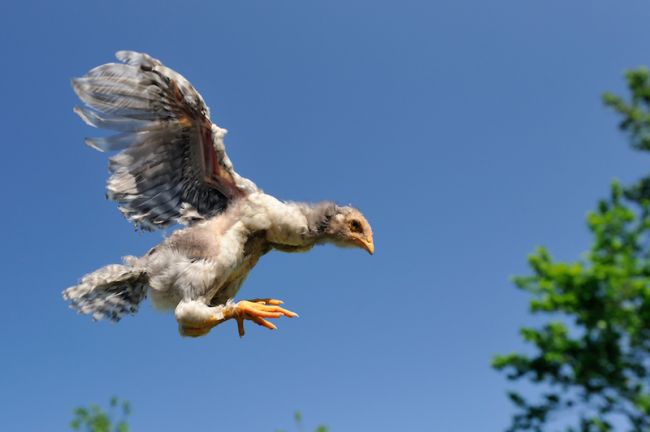
Is It Ethical to Clip A Chicken’s Wings
Since chickens need their ability to fly, even with how limited it is, some people think that clipping chicken’s wing feathers is unethical. Some people would also say that having backyard chickens, especially in a coop and run, is unethical. Clipping a chickens flight wings does not cause any pain to a chicken. Just like clipping a dog’s nails, as long as you do it correctly, there is no pain and no blood.
If your chickens are backyard chickens that spend a majority of time in a coop and run that is well fenced, you probably do not need to clip their wings. Even in most backyards you probably do not need to either. If your chickens free range a lot, especially in a more rural setting, you really should leave their wings unclipped. That is their main defense mechanism. If you have a secure area for them that they keep escaping from then it might be time to look into it. It seems like once one chicken has figured out a way to escape, pretty soon your whole backyard chicken flock will be doing it as well.
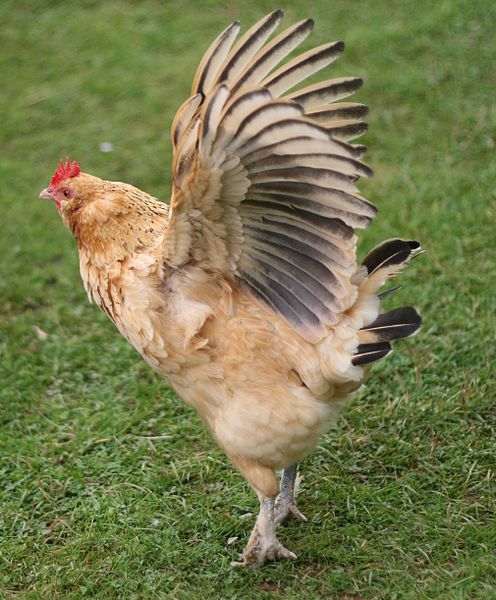
Should You Clip Just One Wing
You can either clip one of your chicken’s wing or both. If you have chickens that are like all of the chickens I have ever had, it can be hard to hold them still. So clipping just one wing could be a viable option.
Clipping just one wing makes it so your chickens flight trajectories are lopsided or uneven. This will accomplish one of two things.
- You backyard chicken will realize it can not fly straight and will eventually stop trying.
- She will figure out how to compensate for the clipped wing feathers and keep doing what she was doing before.
Sometimes clipping just one wing’s feathers is just enough to deter your backyard chicken from flying. If you are still having issues, try clipping the feathers on the other wing. A lot of people say they like to clip both wings’ feathers so their hen can still have limited flying to get up to roosting bars and such. Whereas clipping just one wing keeps their hens fairly grounded.
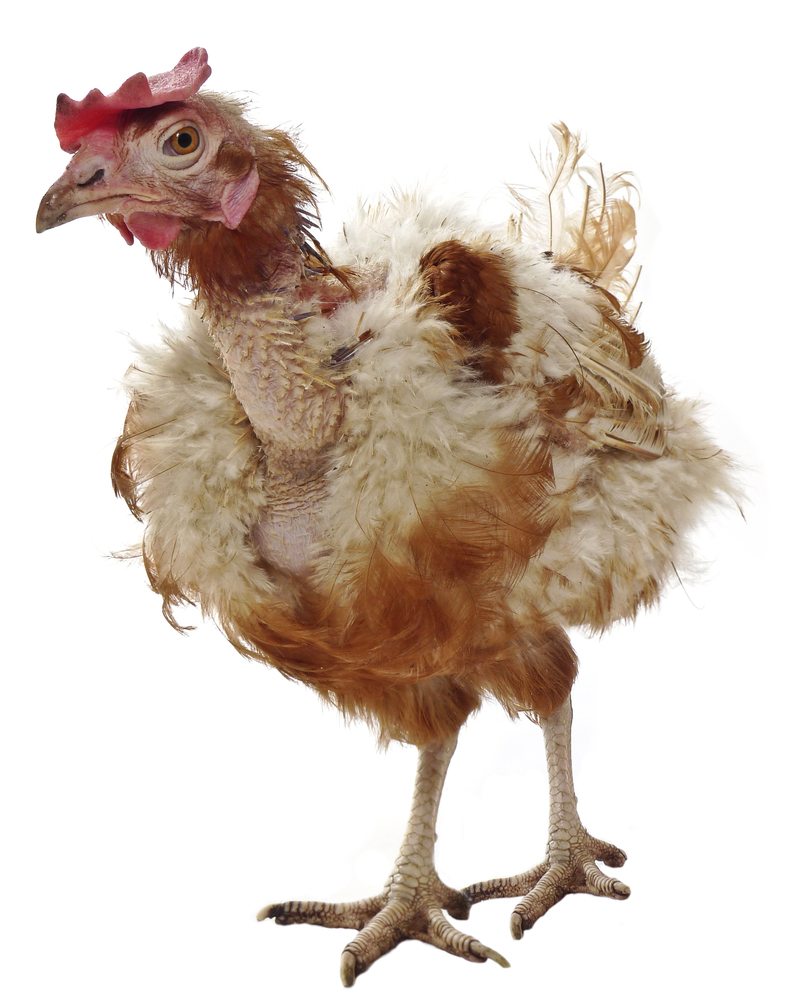
Molting
What is it?
Molting is when a chicken starts to shed or lose it’s old feathers and grows new ones. Throughout the year, a chicken’s feathers break, get dull, damage, etc. Molting is nature’s way of protecting your backyard chickens. New feathers come in to give better insulation and better coloring for attracting mates. Chickens look HORRIBLE when they are molting. So if your chickens look like death, it very well could be the start of molting season.
When does it happen?
Molting happens usually in the beginning of the fall. As the days get shorter and the temperature starts to drop, you will notice molting beginning to start. First year chickens usually will not go through molting their first fall. Their feathers are still fairly new. The molting process will take several weeks from start to finish. Some folks believe that the earlier into the year that molting starts, the more harsh the winter will be.
How does this help clipped wing feathers?
Maybe you clipped your backyard chickens’ wings and you regretted it. Or you clipped them poorly. You could have also gotten new chickens from someone else and they had the wings clipped. The good news is after the molting process is over, their flight feathers will be back in as good as new. Your hens (or roosters) will have full beautiful feathers again. Another way to look at it, if you want your chickens to have clipped wings, it is time to start clipping again.
Plucking the Clipped Wing Feathers
If you need or want your backyard chickens’ feathers to grow back, there is another way of getting them to come back without having to wait until they start their molt in the fall. You can pluck the flight feathers that were clipped to activate their regrowth. These feathers will grow back in within six to eight weeks.
Some precautions might need to be taken if plucking a chickens feathers. Firstly, it is probably going to hurt the chicken. So make sure you have the chicken held securely. Second, after the feather or feathers are plucked out, there will be exposure. I would buy some ointment to put on the exposed area to help avoid the potential for infection. Also chickens have a knack for exposing and exploiting weaknesses in other birds. You will need to keep an eye on your happy backyard chicken flock to make sure they are not pecking each other’s wings. Those small exposed areas can get worse pretty quickly once a bossy hen starts pecking away.
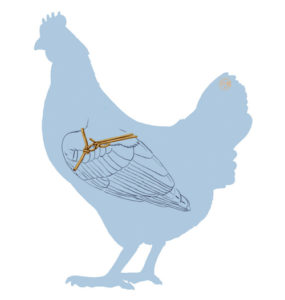
Alternative to Clipping Chicken Wing Feathers: Brailing
Brailing is a less common way of limiting a backyard chickens flying abilities although it is one method. If you are wanting to have show chickens, you will need to avoid clipping their wings. Brailing is a way to not clip their wings but make it so they can not fly. It can be more time intensive and does have the potential to damage the chickens wings. So you do need to exercise caution. Since clipping a chicken’s wing feathers does not cause damage or pain, you see it done more often.
I did find some information from BackyardPoultry. They say:
“Brailing involves binding one wing with a soft cord or strap, called a brail, so the wing can’t be opened for flight. Brailing is typically used to control a young bird that will eventually grow too heavy to fly, and also works for a show bird when you don’t want to mar its appearance by feather clipping.”
They then have the steps listed to do the brailing:
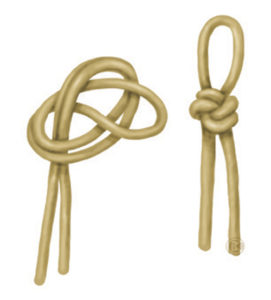
- Start with about 40 inches for a large breed, 30 inches for a bantam.
- Fold the cord in half and tie a knot near the fold, creating a small loop at the end. Tie a second knot about 4-1/2 inches from the first knot for a large breed, three inches away for a bantam. Again, the exact distance between the knots will depend on the size of the bird’s wing.
- Slip the wrist of the chicken’s wing between the two knots. The cord should be loose enough to easily slip over the wing but tight enough to hold the wing closed. Adjust the second knot as necessary to achieve a proper fit. When the fit is right, apply the cord by slipping it between the thumb (alula) feathers to help keep it in place.
- With brail’s end loop on the outside of the wing, and the two loose ends under the wing, wrap both loose ends around the top of the wing. Slip both ends through the loop and tie them in a half-hitch knot.

“The brail should be just tight enough to keep the wing from opening, but not so tight as to restrict circulation or cut into the wing. To determine tightness, slide two fingers under the brail (one finger for a bantam). If the fit feels snug, but the fingers slide in easily, the brail is just right. If the fingers do not slide in easily, the brail is too tight.
Another test is to gently bounce the chicken up and down in your hands until it flutters its wings. If the bird can lift the brailed wing or the brail slips, it’s too loose. When the fit is right, cut off excess dangling loose ends, leaving just enough to retie the brail if you plan to reuse it.”
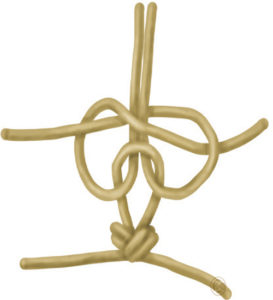
I put pictures above to use as a visual guide.
I hope you found value in this post. Make sure you hit the share button up top to share on your social media. Remember sharing is caring and helps us keep growing here at BackyardChickensHQ.
